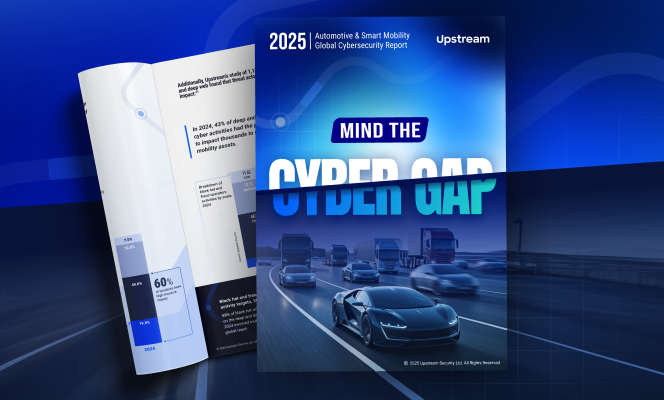

The Next Generation of Ontology: Using Live Digital Twins to Drive Automotive AI Adoption
For years, the automotive industry has invested heavily in connecting vehicles, building data pipelines, and defining architectures to make sense of it all. Yet, despite the billions spent, most OEMs and mobility providers still face the same problem: data remains underutilized, siloed across systems, hard to contextualize, and often used only retrospectively.
Today, the real opportunity lies in moving from connected to intelligent, from passive data collection to real-time digital intelligence that drives revenue. This shift is powered by two foundational concepts: ontology and the live digital twin.
They’re closely related but operate at different levels of abstraction. Understanding how they fit together explains why a live digital twin is emerging as the new cornerstone for AI-driven automotive ecosystems.
Ontology: The Conceptual Foundation of Knowledge
An ontology defines the structure and meaning of data. It’s the semantic layer that tells your systems what things are and how they relate.
In automotive terms, it describes:
- The entities in your ecosystem (vehicles, ECUs, sensors, events, alerts)
- The relationships between them (a vehicle has ECUs; a trip includes telematics events; an alert corresponds to a DTC)
- The attributes that give each entity context (speed, mileage, fault code severity, timestamp)
This is what makes an ontology powerful: it turns data into knowledge, enabling interoperability, analytics, and reasoning across systems. Automotive platforms rely on ontologies to create a consistent, semantically rich foundation for decision-making. But an ontology alone is static. It tells you how the world should be described, not how it actually is right now.
The Live Digital Twin: From Description to AI-Ready Reality
A live digital twin takes the next step, transforming the conceptual framework of the ontology into a dynamic, data-driven reflection of the real world.
Upstream’s live vehicle digital twin continuously mirrors the state of every connected vehicle and fleet, synchronizing across diverse data streams: telematics, mobility platforms, OTA updates, diagnostics, and even cybersecurity alerts.
In practice, there isn’t just one digital twin. Multiple co-existing twins represent different layers of the ecosystem, each focusing on a specific dimension of the operation:
- A product or vehicle twin reflects the real-time health, usage, and software state of a single device.
- A mobile app twin represents the user’s digital interaction layer, how they engage with the connected product and ecosystem.
- A consumer twin encapsulates behavior, preferences, and service interactions.
- A fleet or cohort twin aggregates insights across thousands and even millions of devices to reveal trends, anomalies, and operational efficiencies.
Together, these layers create a comprehensive digital ecosystem, a living model that captures the dynamic behavior of assets, users, and systems in context. This multi-level visibility is instrumental in providing a holistic view of operations, enabling proactive decisions and anomaly detection that span from individual diagnostics to global fleet intelligence.
Compared to the sprawling complexity of a traditional raw data lake, digital twins form a thin, intelligent data layer. They don’t replicate every byte of data; instead, they extract and infer the most meaningful elements of asset behavior, health indicators, anomalies, usage patterns, environmental context, and surface them in real time.
This abstraction dramatically improves data efficiency and AI readiness, offering a high-value, low-latency foundation for predictive analytics, automation, and decision-making across the enterprise.
Two Layers, One Vision: Intelligence in Motion
Ontologies and digital twins aren’t competing ideas. They’re complementary layers in the evolution of intelligent automotive data architecture.
The ontology serves as the conceptual foundation, defining entities, relationships, and meaning across the ecosystem. It brings order to complexity, providing the structure and shared language needed for interoperability and analytics. It’s the layer that tells your systems what exists, how things connect, and why they matter. In essence, it builds the map of your operational universe.
The live digital twin, on the other hand, is the operational layer. It’s dynamic, data-driven, and constantly in motion. While the ontology provides context, the digital twin provides reality. It continuously mirrors the current state of assets and systems, enabling action, automation, and insight in real time.
Together, these two layers bridge the gap between knowing and doing. The ontology structures your understanding of the world; the live digital twin brings that understanding to life, turning abstract models into living systems of intelligence. When combined, they create a feedback loop where every event, update, and anomaly enriches the organization’s knowledge, and every insight can immediately drive operational outcomes.
The Business Imperative: From Cost to AI-Powered Growth
As vehicles become software-defined and AI-driven, data must evolve from a compliance requirement to a strategic asset, one that generates measurable business outcomes.
With a live digital twin architecture, automakers can:
- Predict and mitigate costly failures before they happen
- Power data-driven services like usage-based insurance or predictive maintenance
- Optimize OTA campaigns and software rollouts
- Deliver tailored driver experiences and connected services
- Detect anomalies and cyber threats in real time (XDR)
This is how connected vehicle data shifts from being a cost center to a revenue engine, fueling new monetization models and ecosystem partnerships.
In the era of AI-native mobility, the organizations that thrive will be those that treat data not as a by-product but as a living, intelligent ecosystem.
The live digital twin turns vehicle data into action, and action into value.

